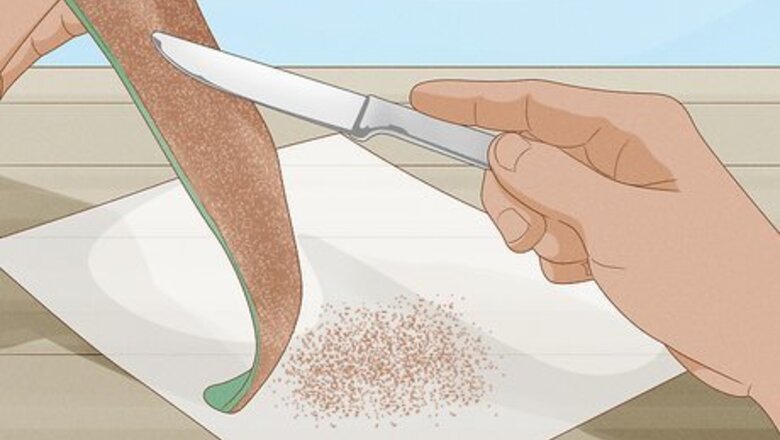
views
Propagating Staghorn Fern Spores
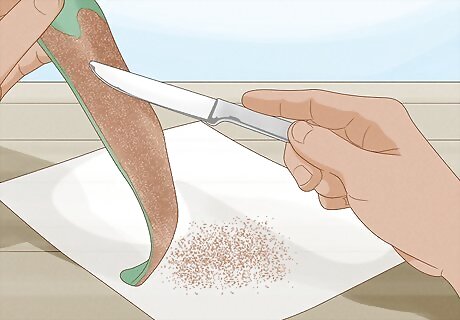
Scrape spores off the bottom of a fern leaf. Hold a leaf from a Staghorn fern over a white piece of paper, bottom side up. Use a butter knife to gently scrape off the little brown dots all over the bottom of the leaf. Once you have a pile about the size of a quarter, you can stop. Be careful to keep the spore pile on the piece of paper. You can also purchase spores in little packets from nurseries if you don't have access to a fern leaf.
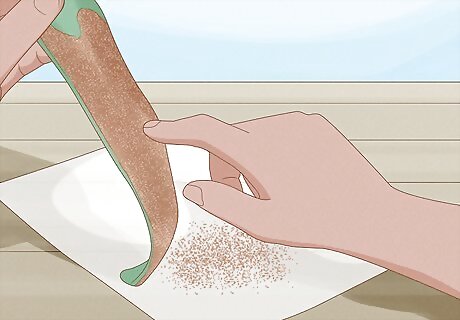
Tap the paper with your finger to separate out the spore casings. Hold the piece of paper flat in front of you and tap the bottom with one finger several times. The casings that the spores were in will begin to separate out, while the spores cling to the paper. Dispose of the casings and keep the spores on the paper to sow right away.
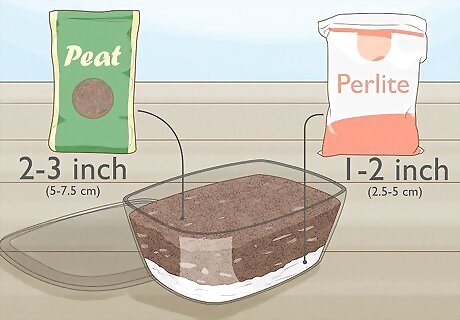
Create a propagator with a plastic box, perlite, and peat moss. Any plastic container with a tight-fitting lid will do, just be sure it will fit in your microwave. Then add a 1- to 2-inch (2.5 to 5 cm) layer of fine perlite, followed by a 2- to 3-inch (5 to 7.5 cm) layer of peat moss. Press the peat moss down with your fingers so that the top is flat and even. Since the container will be heated in the microwave, be sure it is microwave safe. Make sure the container is large enough to leave several inches between the mixture and the lid. This will allow the fern room to grow. If you don't have a microwave-safe plastic container, you can microwave the growing mixture in a different container and then transfer it to the plastic container you want to use when you're finished.
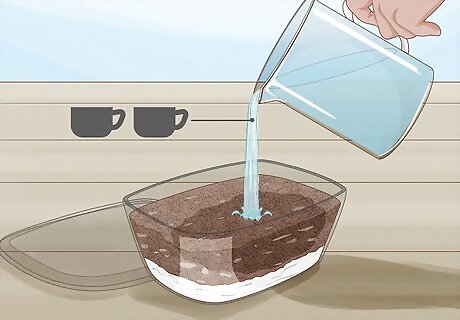
Pour 2 cups (0.5 L) distilled water over the mix. Boil some water and allow it to cool slightly, or just buy distilled water. Pour 2 cups (0.5 mL) slowly and evenly over the mixture so you don't disrupt the layers.
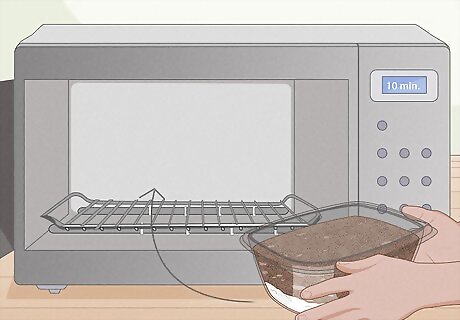
Microwave the container for ten minutes. Place the lid over the mixture and put the container in the microwave. Heat on regular power for ten minutes to sterilize the mixture and the container. Be careful when you remove it since it will be very hot.
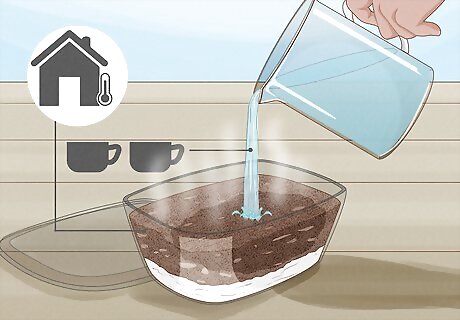
Add 2 more cups of distilled water. Pour 2 cups (0.5 L) of distilled water that have cooled to room temperature into the container. This will cool the mixture down enough that you can safely add the spores.
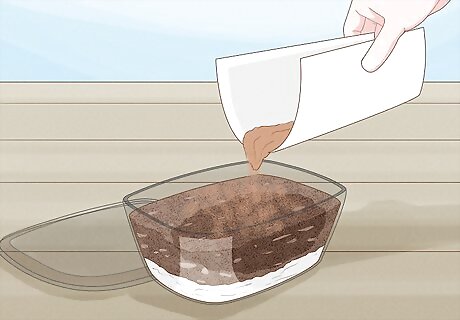
Sprinkle the spores evenly over the mixture. Gently shake the paper and move it around over the container to spread the spores evenly across the mixture. You may need to scrape some of the spores off the paper with the butter knife. To avoid contaminating the fern spores when you're planting them, make sure your hands and clothes are clean. Only use tools and containers that have been sterilized with 5-10 percent bleach.
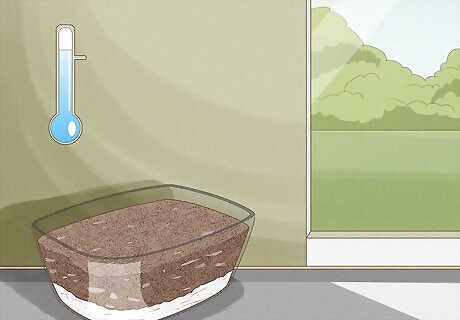
Place the container in a cool, dimly lit spot. Find a place in your home where the spores will receive a little light all day, but no direct sunlight. They need to stay moderately cool while they propagate. Off to the side near a window will work, just be sure the light never lands directly on the container.
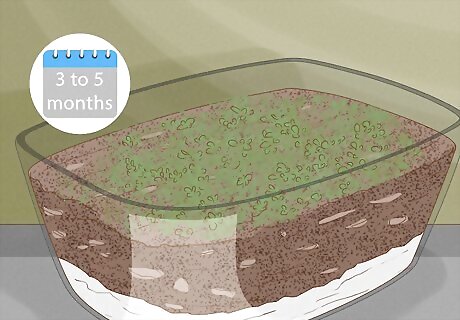
Mist propagated ferns every three to five days. Once you begin to see a thin green layer appear across the top of the mixture, start misting the new growth. Use a sterilized spray bottle filled with distilled water, and spray the entire surface area of the mixture every three to five days. Spray enough water that you're dampening everything, but not adding more standing water. It should take 3 to 5 months to reach this point.
Transplanting and Caring for Staghorn Ferns
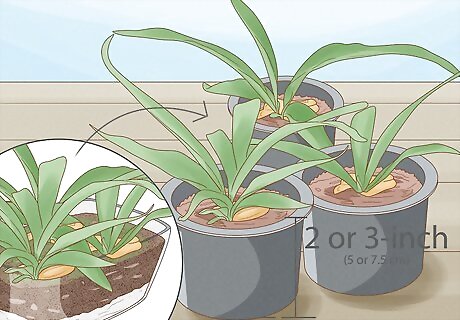
Transplant ferns once you see fronds. As soon as you see fronds forming on your ferns, use tweezers to carefully pluck a fern out that you want to transplant. Be careful not to destroy the root system. Put it into a 2- or 3-inch (5 or 7.5 cm) plant pot with potting soil. Use a soil similar to the makeup of African Violet potting soil, which contains extra humus. You can transplant three or four baby ferns together into the same small pot if you want to. Just be sure to allow about an inch (2.5 cm) of space around each one for its roots to grow. Ferns that share a pot will likely need to be re-potted sooner than ferns that have their own pot.
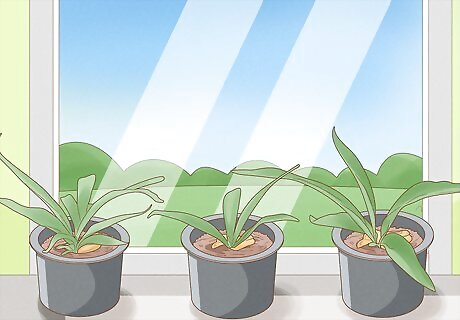
Place your fern in indirect sunlight. As with the spores, the fern does best in indirect sunlight. Try to pick a room in your home where the temperature remains fairly constant and the fern will receive at least eight hours of indirect sunlight.
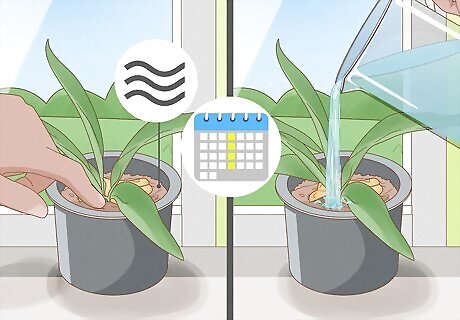
Water the fern when the soil is dry to the touch. Keeping the soil too wet will cause your fern to rot, so make sure to wait until the soil is dry before you water it. This may be once a week in moderate temperatures, or more often in hot temperatures. Pour enough water over the base of the fern to saturate the roots and the soil, but don't leave any standing water.
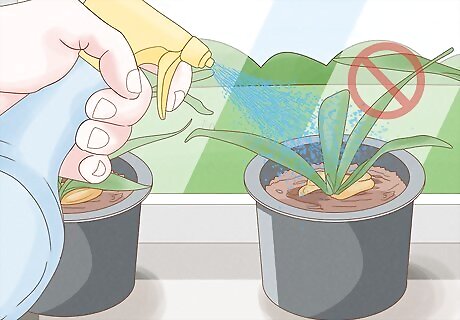
Apply water only to the soil to avoid black spot. Avoid misting your fern. Staghorn ferns are susceptible to a fungus called black spot, and the moisture left on the fronds from misting is often the culprit.
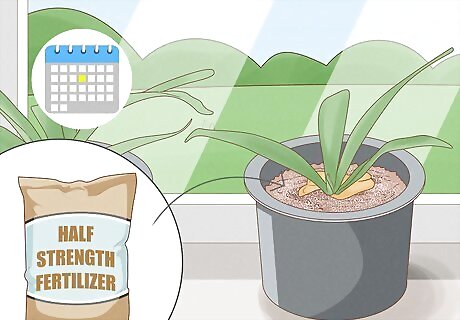
Fertilize once a month with half-strength fertilizer. Find a commercial fern fertilizer at a garden center or nursery and mix it with water to cut down on the strength. Pour a spray bottle half full of fertilizer and fill the other half with water. Then follow the product instructions for application.
Mounting a Staghorn Fern
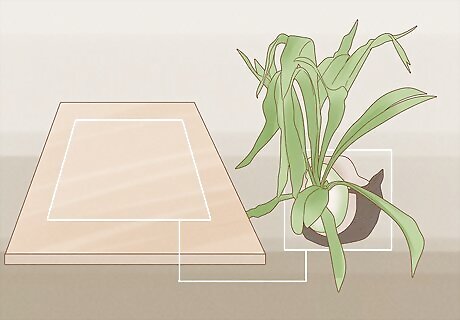
Find a plank of wood larger than the base of your fern. When your fern has matured and has reached a few inches wide and tall, you can mount it on the wall. Find a piece of wood that you like the look of, and make sure it's longer and wider than the base of your fern.
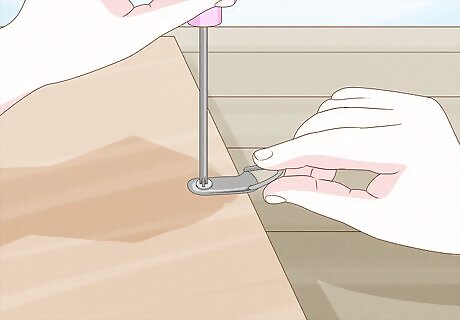
Install hanging hardware to the back of the wood. Purchase a pack of hardware used for hanging heavy pictures or mirrors. Before you begin mounting the fern, attach the hardware to the back of your piece of wood where you'd like it to attach to the wall.
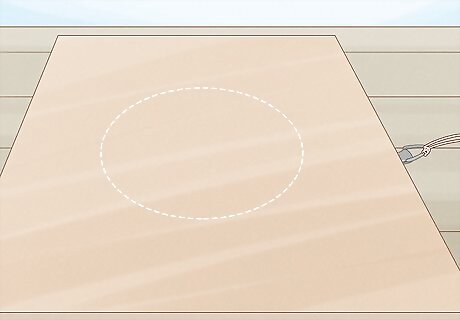
Trace a circle in the middle of the wood. Use a cup or a bowl that's about the width of the base of your fern. Place it in the middle of the wood and trace a circle with a pen or marker. You can also move it a little up or down if you don't want it exactly in the middle.
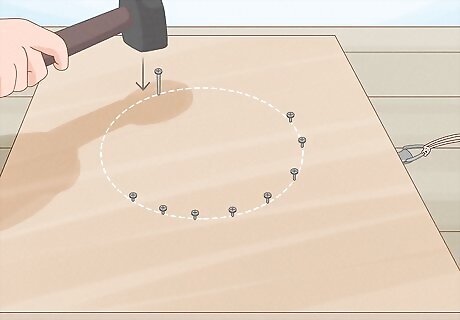
Hammer in nails all the way around the circle. Get eight or so small nails and hammer them along the edge of the circle you traced, spacing them evenly. If your circle was large, you may need more than eight nails. Leave less than a centimeter of nail poking up out of the wood.
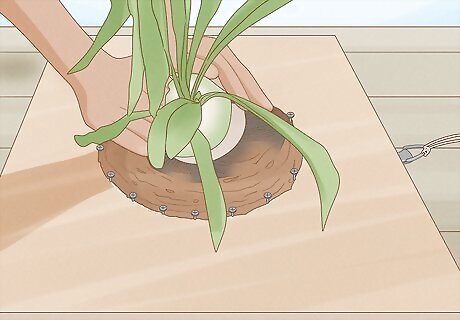
Place your pruned fern inside the circle of nails. Gently pull your staghorn fern from its pot or container and place the whole root system in the middle of the nails. Prune the roots back a little with scissors or shears so that they fit inside the circle.
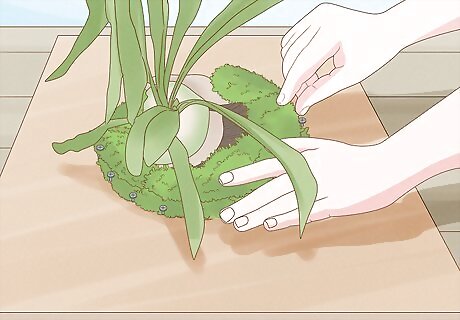
Cover the base of the fern with peat moss. Dampen handfuls of peat moss and wrap them around the base of your fern, covering the roots. Make sure the peat moss is damp enough that it sticks where you press it down.
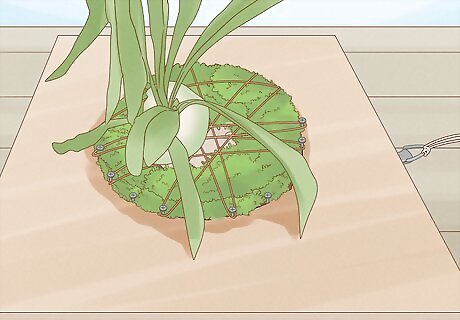
Tie the fern down by crisscrossing twine around the nails. Take burlap twine or baker's twine and tie a knot on one end. Tie that knot around one of the nails, and then start crisscrossing the twine over the peat moss. Wrap it around a nail on one side of the plant before crossing back over the roots to tie it on a nail on the other side. Continue until you feel like the plant is secure.
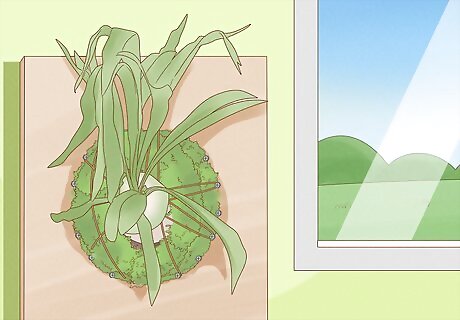
Hang your fern in bright, indirect sunlight. Find a spot in your home to hang the fern where it won't receive any direct sunlight. Indirect natural light and steady, mild temperatures are best.

Water the mounted fern once a week in the shower. Water your staghorn fern by taking the mount off the wall and placing the entire thing in the shower. Spray water over it for about ten minutes and then allow it to drip dry. Brush off excess moisture from both the wood and the fronds with a dry cloth, then rehang the fern.
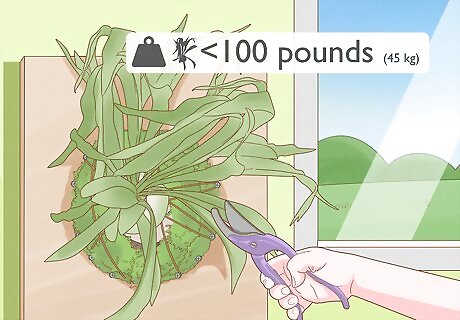
Prune the fern periodically to maintain its weight. Staghorn ferns can grow to well over 100 pounds (45 kg), which makes them impractical for mounting. To avoid needing to remove your fern from the wall, prune it periodically as the fronds begin to overwhelm the board. Use shears to cut fronds at their base, just above the crown of the fern. Never rip a frond off, as this can cause tissue damage to the crown tissues.

















Comments
0 comment